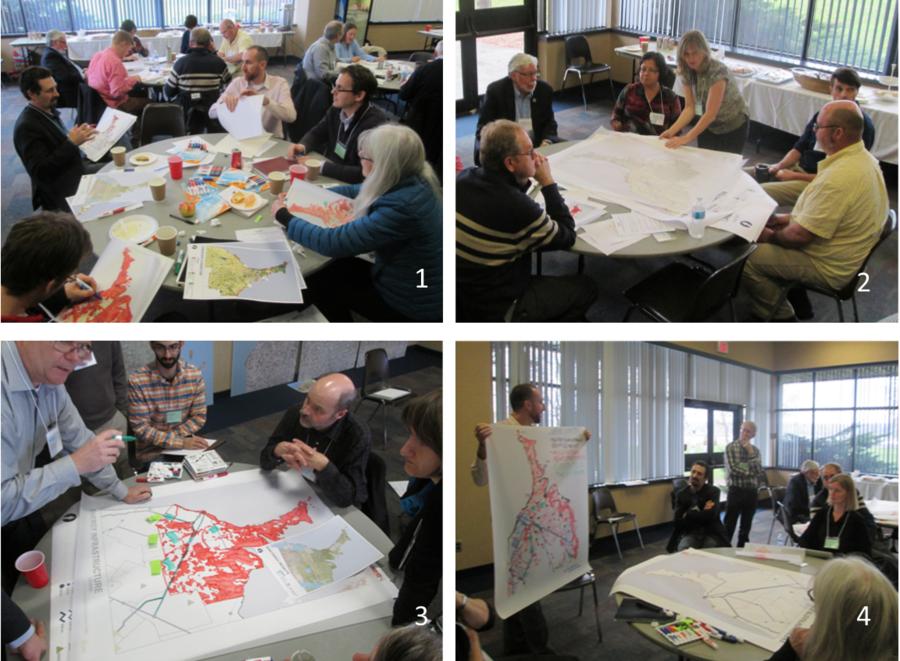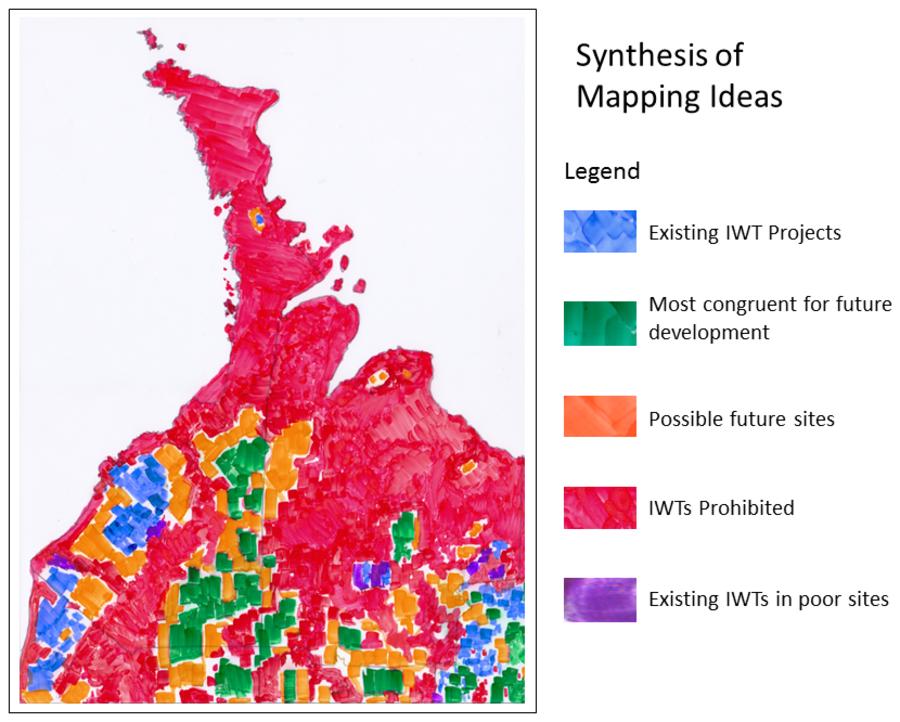As part of her doctoral research, Christine developed new planning methods for wind energy landscapes supported by meaningful community involvement. The study began with an investigation of residents’ subjective views on future energy development, their visual landscape preferences, and their perceptions of wind energy landscapes in Grey, Bruce and Huron Counties, and culminated in a participatory, community-based planning workshop.

The four-step Deliberative Mapping Process has the following steps:
- Initiating conversation: sharing the results of individual mapping with table members
- Deliberating siting issues in a shared conversation, seated in a circle around large maps
- Collaborative mapping
- Sharing results in a plenary session
Wind energy planning issues are highly complex, as citizens have deeply rooted and often conflicting belief systems about energy development, and divergent views about what changes are harmonious with the character of existing physical and cultural landscapes. Effective siting of energy projects requires knowledge of landscape character, including the biophysical aspects of landscape, cultural values, and aesthetic experiences associated with ‘place’.
The landscape plans are developed using constraint mapping techniques, and are informed by Q-method values research conducted prior to planning workshops. Twenty-seven participants (planners, elected officials, wind developers, researchers and lay citizens) collaborated on identifying most and least-preferred zones for future wind energy development.
This study concludes that how we adapt to changing landscapes differs because of deeply rooted but differing place identities, but that common ground can be reached in a planning context while accommodating diverse cultural relationships to landscape.

The results point to new directions in planning policy that support community-based rather than top-down provincial directives to plan for significant changes to landscape, including rural infrastructure.
Funding for this research was provided by OMAFRA. A report on the outcomes of this research can be found here